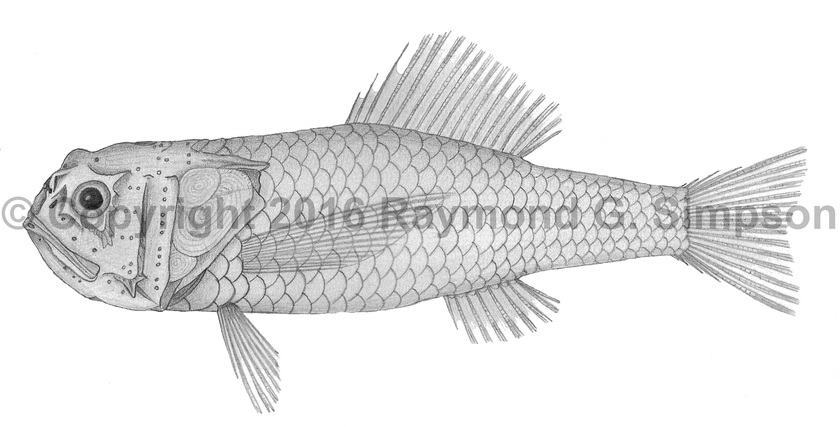
Common Name
Smallcheek Bigscale
Year Described
Ebeling, 1962
Identification
Dorsal Fin: III, 14-16
Anal Fin: I, 7-8
Pectoral Fin: 14-15
Pelvic Fin: I, 7
Caudal Fin: 9-10 branched, 4 procurrent rays
Lateral Scale Rows: 32-33
Gill Rakers: 18-19
Vertebrae: 29-30
Head with numerous bony ridges and pits, only party covered by skin. No post-temporal spines, projecting anterior spines, or raised bony crest on top of head. Eye diameter equal or greater than suborbital bone. Preopercle with two spines at angle. Opercular margins relatively smooth or with weak spination. Gill rakers in first arch relatively few (19 or less). Anal fin origin under the last 1-3 dorsal rays. Pectoral fin reaches last ray of dorsal fin. Pelvic fin origin under or slightly rearward of pectoral fin origin. Body scales large and easily shed. Four scales on gill cover. Spur present on first haemal arch of caudal vertebrae.
Color
Body uniformly dark to black.
Size
Maximum size to 48mm SL
Habitat
Mesopelagic below 200m.
Range
Known from the equatorial western Atlantic. Also the eastern Atlantic, Indian, and western Pacific Ocean.
References
Afonso, G. V. F., Di Dario, F., Eduardo, L. N., Lucena-Frédou, F., Bertrand, A., & M.M. Mincarone. 2021. Taxonomy and distribution of deep-sea bigscales and whalefishes (Teleostei: Stephanoberycoidei) collected off northeastern Brazil, including seamounts and oceanic islands. Ichthyology & Herpetology, 109(2), 467-488.
Kotlyar, A. N. 2014. Revision of the genus Melamphaes (Melamphaidae): 1. Oligo-Raker species M. laeviceps, M. spinifer, and M. eulepis. Journal of Ichthyology, v. 54 (no. 9):620-630.
Other Notes
This oligo-rakered species is most related to the eastern Pacific Melamphaes laeviceps and M. spiniceps, which share the narrow suborbital bones of this species. The thickened and exposed head ridging of this species may be distinctive to this taxa (Kotlyar, 2014).